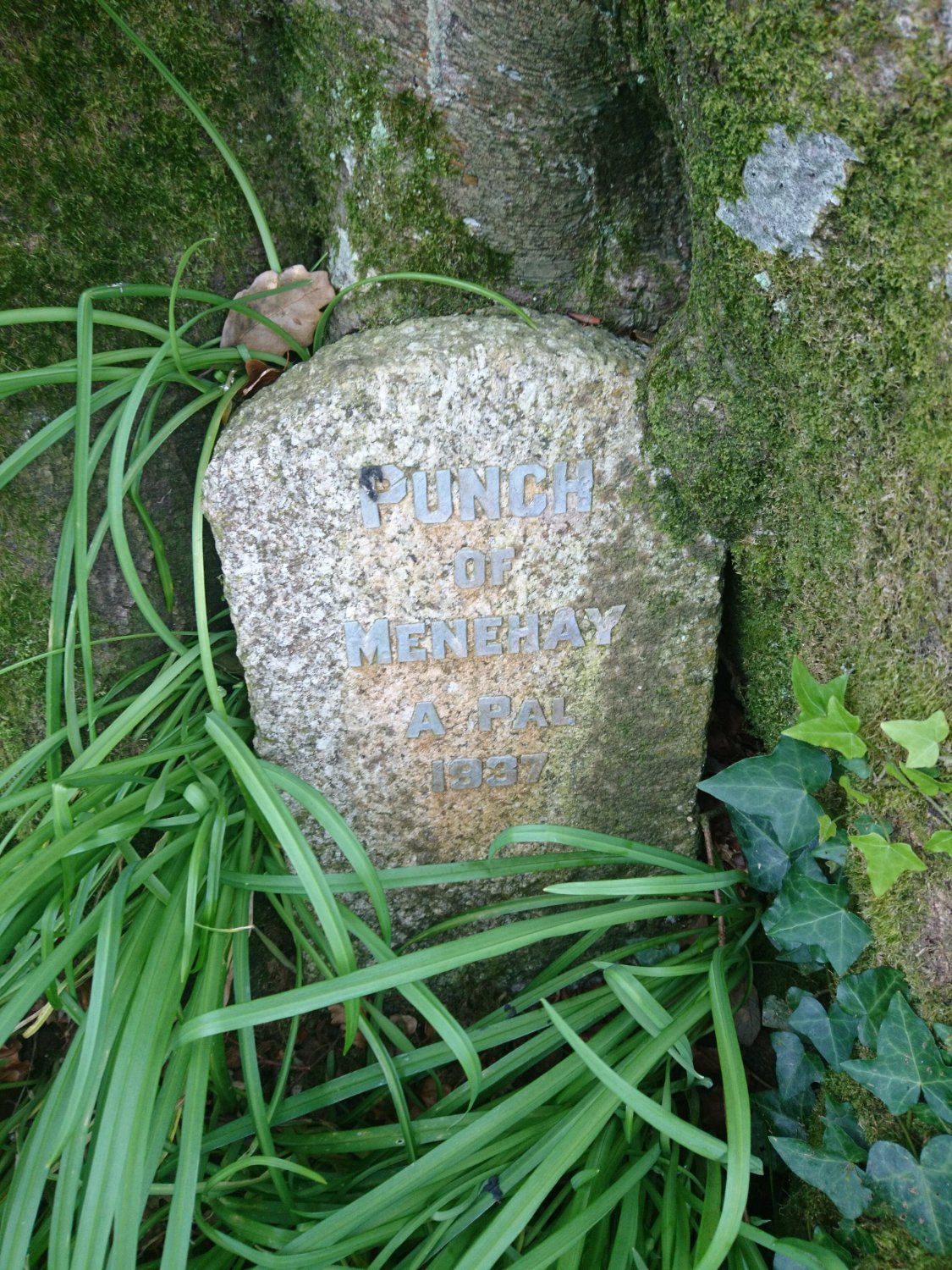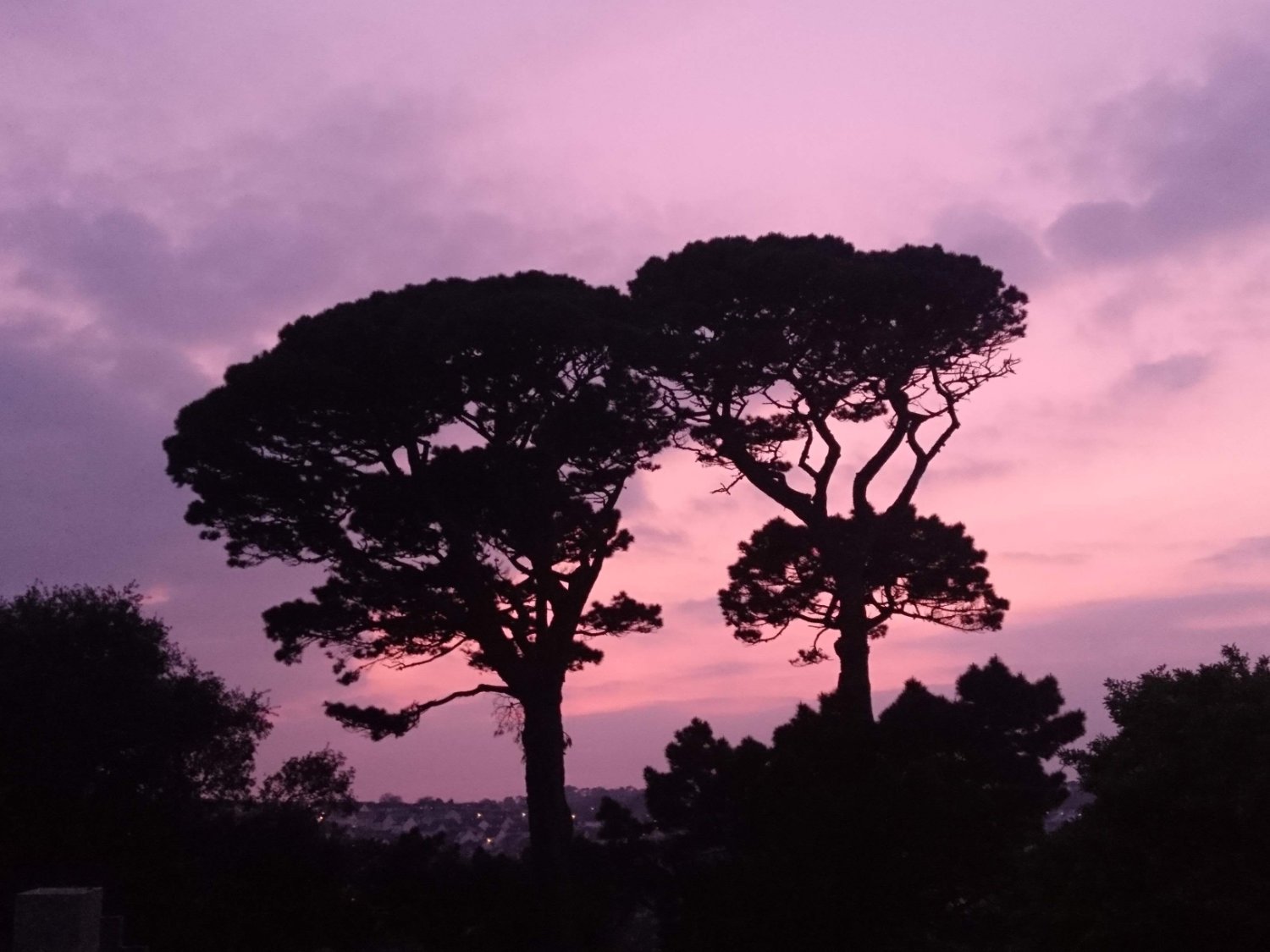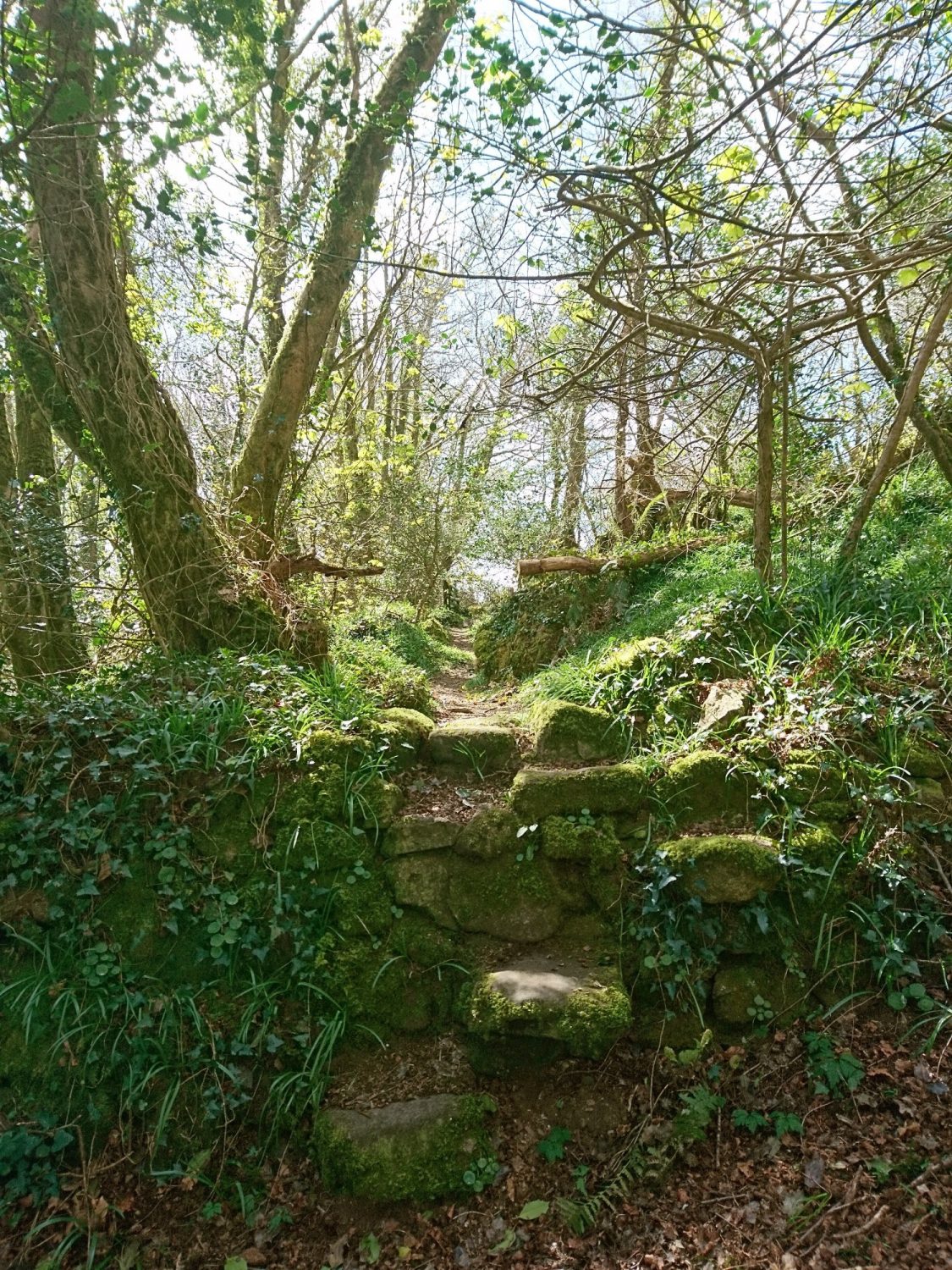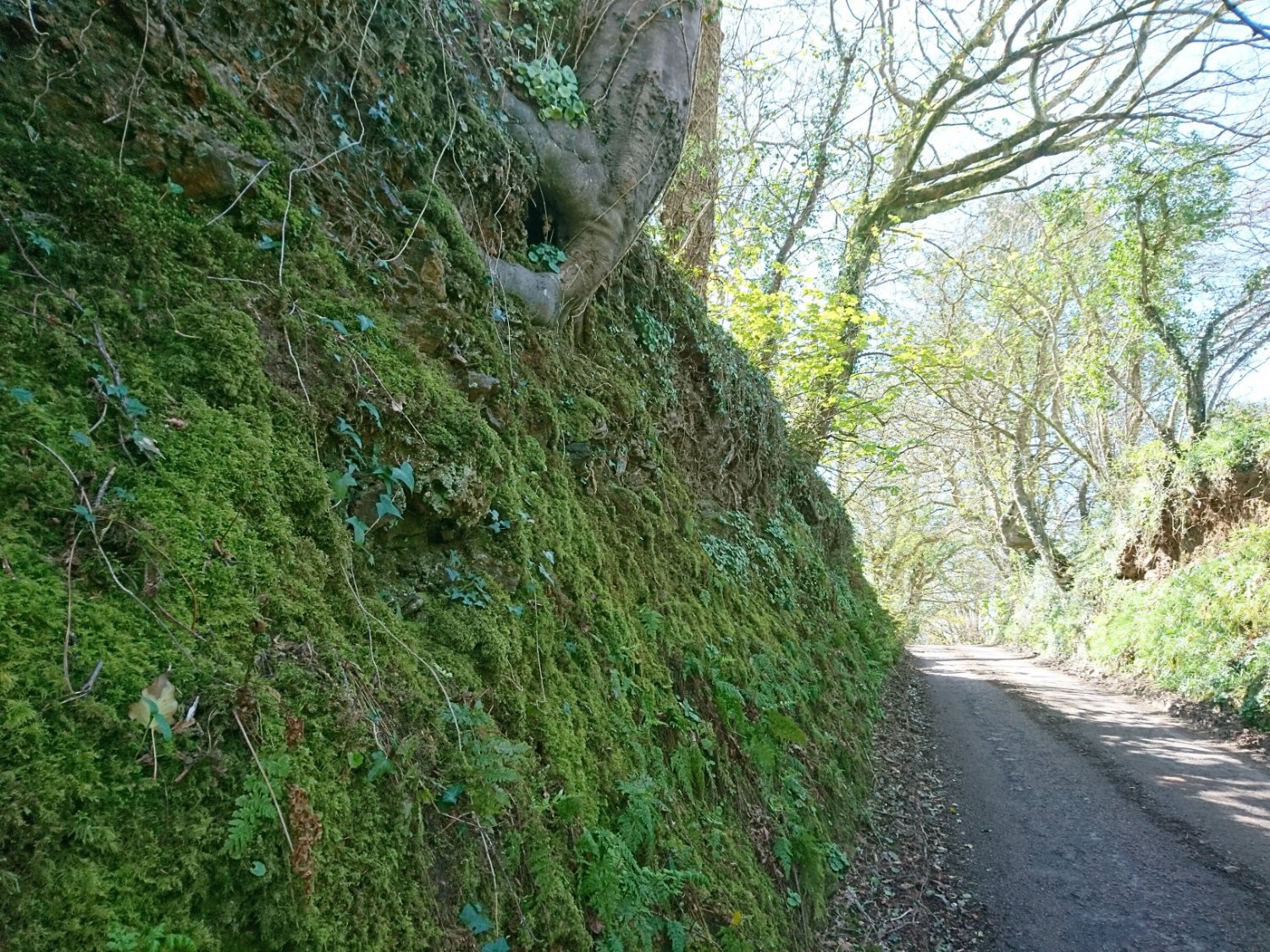
For Will Hazell, lockdown has been a time to discover and connect with the rich tapestry of landscape and history within walking distance of his home.
Tucked beside a footpath near Falmouth, Cornwall, there’s a small gravestone with the epitaph “PUNCH OF MENEHAY A PAL 1937”, erected, apparently, to celebrate the legacy of a much-beloved pet monkey. It’s a humble historical treasure that I was thrilled to come across, but if it wasn’t for Covid-19, I would likely never have done so.
Lockdown has been a time of constraint, but for many of us it’s also been a time of discovery as we’ve found ourselves noticing and appreciating things we’d previously been unable to see. For me this included a few historical oddities, like Punch’s gravestone, but also something far more significant – for the first time I found myself truly appreciating the Cornish ground beneath my feet.
When I first moved to Cornwall less than a year ago, I was awestruck by the county’s combination of picturesque charm and untamed ruggedness. Determined to make the most of being here, I furiously googled away to figure out the ‘best’ places to visit, and then spent many days driving off to find the most sandy beaches, the most stunning views, the most charming fishing villages. When lockdown descended though, these busy touristic roamings inevitably came to a close. Rather than a whole county’s worth of exploration, I was now limited to wherever I could reach on foot.

Initially, I found myself wandering all over Falmouth itself. Until this point I’d only ever ventured towards the pubs, shops and seafront, seeing no need to walk anywhere else. But now, determined to put my daily walk to good use, I expanded my range. And in doing so I kept stumbling on new sources of interest and delight: the large, resplendent oak tree beside the petrol station on Boslowick Road; the old Quaker burial ground, filled with bluebells; and the Prislow community wood, a small stretch of wildness that carries your mind away from the surrounding suburbia. I found it baffling to think that I hadn’t known these places existed, given their proximity to my front door, but my pre-lockdown life was too busy for these quiet pleasures – always more to do, and improve, and become.
The greatest of my lockdown discoveries came when I started to explore beyond the town boundaries. If I ever fancied a long walk before, I would just take to the coastal path towards Maenporth, but the path’s popularity and slender width meant it wasn’t well-suited for socially distanced dodging. Instead, for the first time, I started heading for the inland footpaths, an OS map in hand, exploring the countryside between the River Fal and the Helford River.
Initially, I was just looking to have some exercise, but these walks quickly became something of an obsession. Although most of this chunk of countryside is never going to be a tourist draw (no sea views or notable mine ruins), my explorations were a revelation.

It’s hard to articulate quite why. It does have something to do with simple beauty – the undulating pastures, the oak trees, the stout granite walls subsumed by living greenery. But it wasn’t just the aesthetic appeal. What made the experience special was the sense of proximity and context. For lack of a better word, this countryside was mine. Not in terms of any legal ownership, or even in terms of identity or family history. But in the spring months of 2020, as the world juddered to a halt, my place was here and nowhere else.
What I felt in these rural wanderings was the interconnectedness of the landscape’s history and my personal presence. Every place in the world has an energy and a character, shaped partly by its geology and plant life, but also by the humans that have passed over it. Physical places are not just blank slates wiped clean for every generation, but a cumulative consequence of the lives that have been lived out in them.
I’d always felt this back home in the Oxfordshire Cotswolds, where I often found myself feeling profoundly irritated by tourists, who only seemed to see a surface layer of quaint charm, unaware of the complex layers beneath. “This isn’t just a pretty backdrop!” I would think. “This is a mystery to be unravelled, if only you would give it the time!”
In Cornwall I’d lost sight of this, taken as I was with the array of new places to visit. Yet, thanks to lockdown, the essential truth was made clear to me again. As I walked and walked, revisiting footpaths from new directions and at different times in the day, I began to slowly make some sense of the place, contextualising the life I lived within it.
Every landscape is a tapestry of tiny details; some are rather noticeable, like Punch of Menehay’s little gravestone, but most seem insignificant, or are only perceptible for brief moments. It’s only by the continual paying of attention that you can begin to understand. As the Irish poet Patrick Kavanagh said:
“To know fully even one field or one land is a lifetime’s experience. In the world of poetic experience it is depth that counts, not width. A gap in a hedge, a smooth rock surfacing a narrow land, a view of a woody meadow, the stream at the junction of four small fields – these are as much as a man can fully experience.”

Of course, a lifetime is not best spent in one field. But even though I’ve only really been here a short time, and will eventually move elsewhere, the time I’ve spent forming a relationship with the particular physical tapestry west of Falmouth has felt meaningful in and of itself. When the world was in a state of unprecedented crisis it was a great comfort to be able to connect to a sense of ongoing continuity here, and I will never forget it.
We all have this option available to us. It takes time, and a continually renewed attention, but wherever you live there are always opportunities for connection and the security of taking a place in the ongoing narrative of your place. And in a post-coronavirus world in which globalisation slows and new challenges arise, this is valuable beyond all measure.
Whatever happens politically or economically, the ground beneath your feet offers a sort of quiet spiritual assurance that can always be relied upon. All that is required from you is some time and a willingness to notice the small things.





